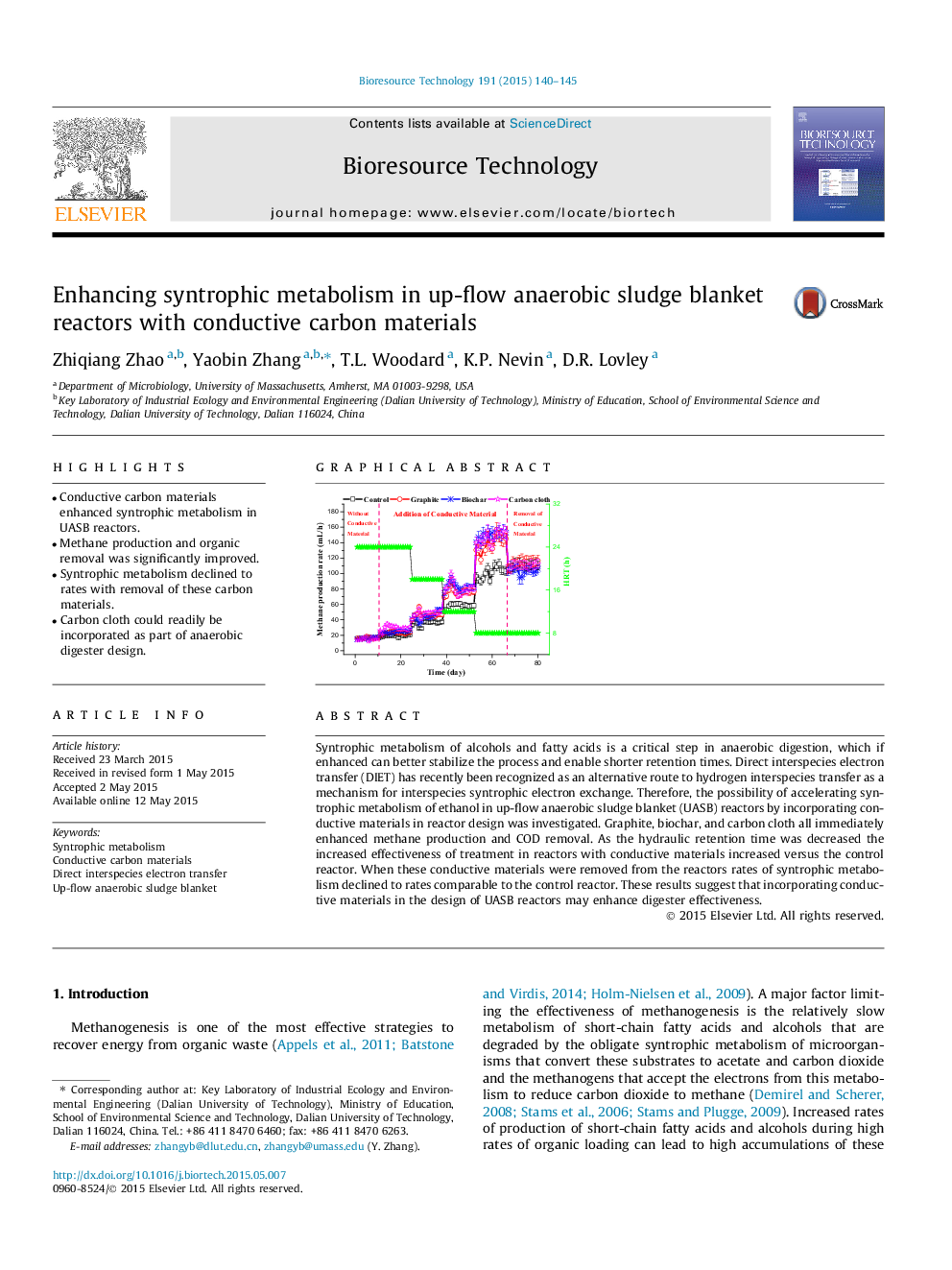| کد مقاله | کد نشریه | سال انتشار | مقاله انگلیسی | نسخه تمام متن |
|---|---|---|---|---|
| 679568 | 1459952 | 2015 | 6 صفحه PDF | دانلود رایگان |

• Conductive carbon materials enhanced syntrophic metabolism in UASB reactors.
• Methane production and organic removal was significantly improved.
• Syntrophic metabolism declined to rates with removal of these carbon materials.
• Carbon cloth could readily be incorporated as part of anaerobic digester design.
Syntrophic metabolism of alcohols and fatty acids is a critical step in anaerobic digestion, which if enhanced can better stabilize the process and enable shorter retention times. Direct interspecies electron transfer (DIET) has recently been recognized as an alternative route to hydrogen interspecies transfer as a mechanism for interspecies syntrophic electron exchange. Therefore, the possibility of accelerating syntrophic metabolism of ethanol in up-flow anaerobic sludge blanket (UASB) reactors by incorporating conductive materials in reactor design was investigated. Graphite, biochar, and carbon cloth all immediately enhanced methane production and COD removal. As the hydraulic retention time was decreased the increased effectiveness of treatment in reactors with conductive materials increased versus the control reactor. When these conductive materials were removed from the reactors rates of syntrophic metabolism declined to rates comparable to the control reactor. These results suggest that incorporating conductive materials in the design of UASB reactors may enhance digester effectiveness.
Figure optionsDownload as PowerPoint slide
Journal: Bioresource Technology - Volume 191, September 2015, Pages 140–145